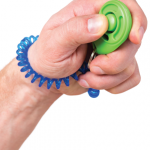The European women also appear different than the Americans. They seem to favor fancy scarves, tying these flowing pieces of silk in topological configurations of dazzling complexity, but somehow all very stylish. The women like square eyeglass frames and an occasional Euro woman will color her hair an exotic red, burnt umber, or a flaming orange that would put Carrot Top’s streaming locks to shame.
Alas, in Europe, there also is more smoke in the air, albeit less than before, and at coffee breaks I am always surprised to see a physician light up a cigarette.
In European Medicine, New Is Emerging from Old
As an amateur journalist and culture commentator, I enjoy describing the scene abroad: the sights and sounds and, of course, the vino. I always like to think about the comparative state of rheumatology in Europe, especially in countries from the old Eastern block. Europe is old—very old. There are new countries that have emerged from the break-up of the old satellites, as the borders have shifted to redefine nationalities in less volatile ways. Nevertheless, despite the mass of history, much in Europe feels new: the sleek convention centers, the commercial clamor and clash of the exhibit hall, the neon glitz of PowerPoint presentations (even if they begin with a picture of a soot-encrusted hospital building, much like a castle that dates to 1500). To me, the most impressive change is the profusion of high-quality research from cities that, just a few years ago, seemed like desiccated and dim outposts of the former Soviet empire.
Europe has a marvelous history in medicine. It goes back centuries, even millennia. Because of the wars, Soviet occupation, and subsequent economic troubles, parts of Europe were left behind in research. Now they are catching up. There is another renaissance happening, as centers of excellence are flourishing all over the continent. They are engaging a whole generation of bright young people into a storied tradition. The energy is terrific and I am always excited to meet and talk shop with people doing important work in places that I honestly had never heard of a few years ago.
The openness, vitality, and collegiality of science are what make research great. Rather than making the world smaller or flatter, science enlarges the world and elevates it to a far richer and more interesting place. Let us hope, therefore, that leaders on both sides of the Atlantic realize the enduring importance of scientific research, increase funding to the highest level possible, and keep the airlines filled with investigators who, like me, fly the friendly skies to joyfully attend each others’ meetings.

